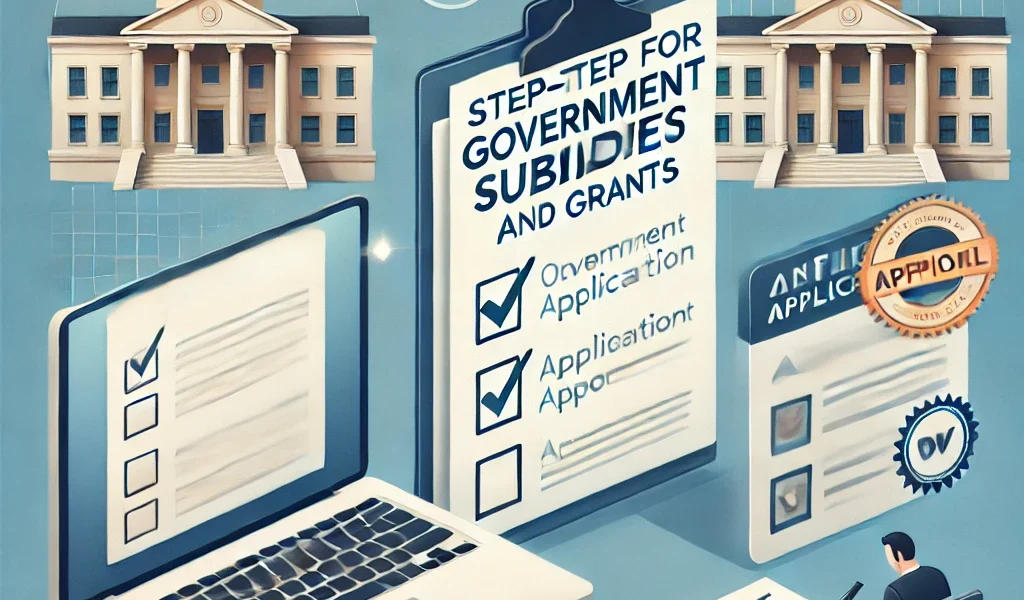Government subsidies are financial aids provided by the government to individuals, businesses, or organizations to support various initiatives and essential needs. These subsidies can help in sectors like agriculture, healthcare, education, business development, and renewable energy. If you are looking to apply for a government subsidy, understanding the eligibility criteria, documentation, and the application process is essential to increase your chances of approval.
This guide will walk you through the step-by-step process of applying for government subsidies under the Subsidy & Grants category in a legally safe and effective manner.
Understanding Government Subsidies and Grants
Government subsidies are financial incentives aimed at reducing costs for eligible individuals or businesses. These can be in the form of direct cash transfers, tax rebates, low-interest loans, or support for specific industries. Grants, on the other hand, are non-repayable funds given for specific purposes, such as research, education, or business development.
Types of Government Subsidies and Grants
Some common types of subsidies and grants include:
- Agricultural Subsidies – Financial aid to support farmers with seeds, fertilizers, and modern equipment.
- Business and Startup Grants – Assistance for entrepreneurs to start or expand their businesses.
- Education Grants – Financial support for students pursuing higher education.
- Healthcare Subsidies – Aid for medical treatments, insurance, and hospital expenses.
- Housing Subsidies – Assistance for low-income families to buy or renovate homes.
- Renewable Energy Subsidies – Support for solar panels, wind energy, and other eco-friendly projects.
Step 1: Research and Identify the Right Subsidy Program
Before applying, it is crucial to identify the most suitable subsidy program for your needs. You can find detailed information on government websites, financial aid portals, or consult with professionals who specialize in subsidy applications.
Where to Find Information?
- Official Government Websites – Check national and state government portals for the latest subsidy programs.
- Financial Institutions – Banks often provide details on business and housing subsidies.
- Non-Profit Organizations – Many organizations assist with subsidy applications and eligibility verification.
Step 2: Check Eligibility Criteria
Each subsidy program has specific eligibility criteria that applicants must meet. Some key factors include:
- Income Level – Some programs are designed for low- to middle-income individuals.
- Business Type and Size – Startups and SMEs may qualify for business grants.
- Sector-Specific Requirements – Some subsidies are exclusive to agriculture, healthcare, education, or renewable energy sectors.
- Geographical Location – Certain programs are region-specific, targeting rural or underdeveloped areas.
- Previous Subsidy Claims – Some programs may have restrictions on multiple applications within a certain period.
To ensure eligibility, always read the fine print and seek guidance if necessary.
Step 3: Gather the Necessary Documents
Proper documentation is essential for a successful application. Here are some common documents required:
- Identity Proof – Passport, Aadhar card, or government-issued ID.
- Income Proof – Tax returns, salary slips, or financial statements.
- Business Registration Documents – For business-related subsidies.
- Property Papers – For housing-related subsidies.
- Educational Certificates – For scholarship or education grants.
- Medical Reports – For health-related financial aid.
Ensure all documents are up-to-date and correctly formatted to avoid delays or rejections.
Step 4: Fill Out the Application Form
Most government subsidies require applicants to complete an application form. Here’s how you can do it effectively:
- Use Official Websites – Avoid third-party platforms that may be fraudulent.
- Provide Accurate Information – Any discrepancies may lead to rejection.
- Attach Required Documents – Ensure all mandatory attachments are included.
- Double-Check Before Submission – Mistakes can lead to unnecessary delays.
Step 5: Submit Your Application and Track Status
Once the application is submitted:
- Obtain an Acknowledgment Receipt – This serves as proof of submission.
- Monitor Application Status – Many government portals allow online tracking.
- Respond to Additional Requests – Authorities may ask for additional information or verification.
Step 6: Attend Interviews or Verification Process (If Required)
Some subsidies require an in-person or virtual interview. Be prepared to:
- Explain why you need the subsidy.
- Provide supporting evidence of eligibility.
- Answer queries regarding your documents and financial situation.
Step 7: Receive the Subsidy or Grant Amount
If approved, you will receive the subsidy in your registered bank account. Be sure to:
- Check Payment Details – Ensure you receive the correct amount.
- Use the Funds as Specified – Some subsidies come with usage restrictions.
- Maintain Records – Keep copies of all approvals and transactions for future reference.
Avoiding Legal and Compliance Issues
To ensure a legally safe process, follow these precautions:
- Apply through Official Channels Only – Avoid scams and fraudulent schemes.
- Do Not Submit False Information – Providing incorrect details can lead to legal action.
- Seek Professional Guidance If Needed – Consult legal or financial advisors for clarity.
- Understand the Terms & Conditions – Non-compliance may result in fund recovery or penalties.
Applying for government subsidies can provide significant financial relief, whether for personal or business use. By following this step-by-step guide, you can navigate the process smoothly while ensuring compliance with all legal requirements. If you need further information, always refer to the official government sources or seek professional assistance.
Disclaimer: This guide is for informational purposes only and does not constitute legal or financial advice. Always refer to official government sources for the latest and most accurate information.




